All products featured are independently chosen by us. However, SoundGuys may receive a commission on orders placed through its retail links. See our ethics statement.
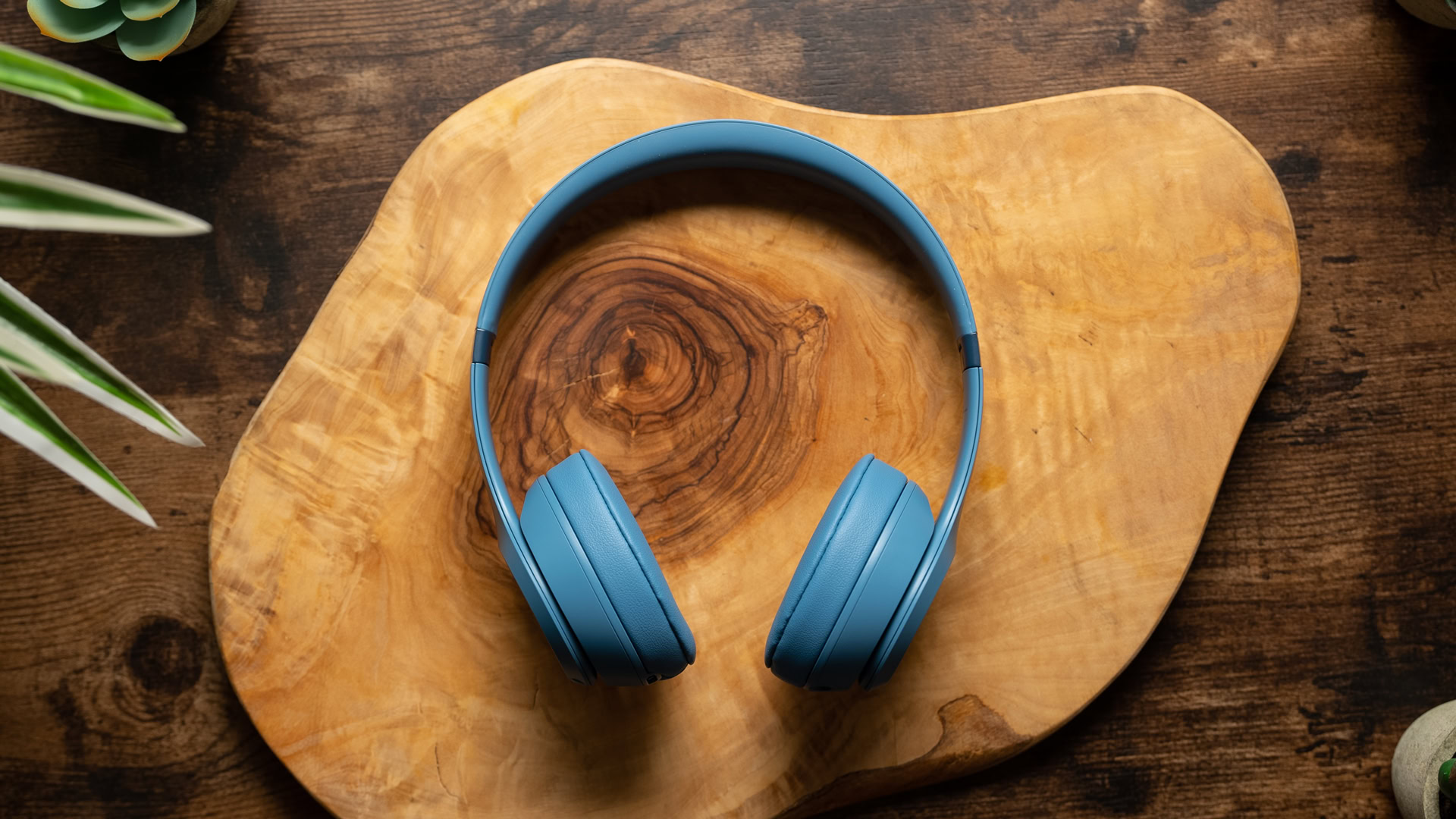
Beats Solo 4 review
Published onFebruary 12, 2025
Solo 4
Beats have become a staple of the headphone world, undeniably successful despite its dubious past. In recent years, the company has released some very decent audio products, so new models are often met with fanfare. Does the new Beats Solo 4 deserve the same? Let’s find out.
- This review was updated on February 12, 2025, to update formatting, links.
- This review was updated on October 17, 2024, to correct titling and copy.
- This review was published on May 17, 2024.
The Beats Solo 4 is for commuters and casual music listeners who prefer the on-ear headphone design to over-ears or in-ears.
What’s it like to use Beats Solo 4?
The Beats Solo 4 is about as basic as on-ear headphones get from the outside, owing to the matte plastic exterior with few features that really stick out — aside from the metallic-looking “b” on either ear cup. Said ear cups are attached to the band by a metal slider with notched grooves to hold the adjustment under tension, and the band itself has somewhat thin padding where it meets your skull.
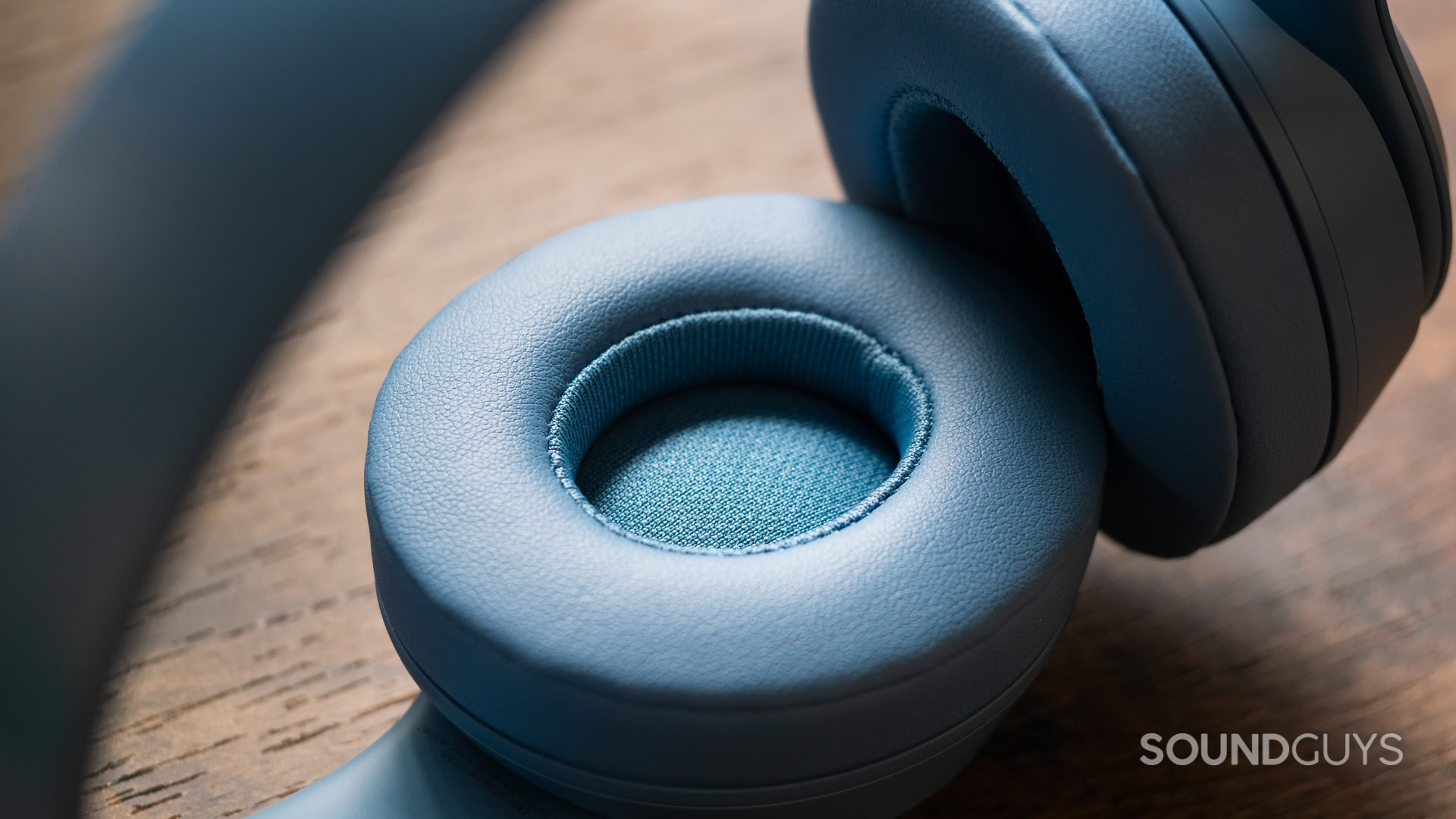
Each ear cup has a foam earpad ensconced in fake leather that’s meant to sit atop your outer ear. This is a problem for comfort, as your outer ears are generally less tolerant of weight and pressure than your skull is. Because of this, even the relatively low weight of 217 grams can seem quite hefty on your head. After an hour and a half, I had trouble continuing to listen to the Beats Solo 4 because it was poor at managing its weight distribution — a common problem for wireless on-ears. With any style of audio product, there are tradeoffs based on their designs, and on-ears have largely fallen out of favor against wireless earbuds and over-ears for several good reasons. For example, isolation tends to be poor, the fit is iffy at best, and the headphones will put the bulk of their mass on your ears and not spread it to your skull.
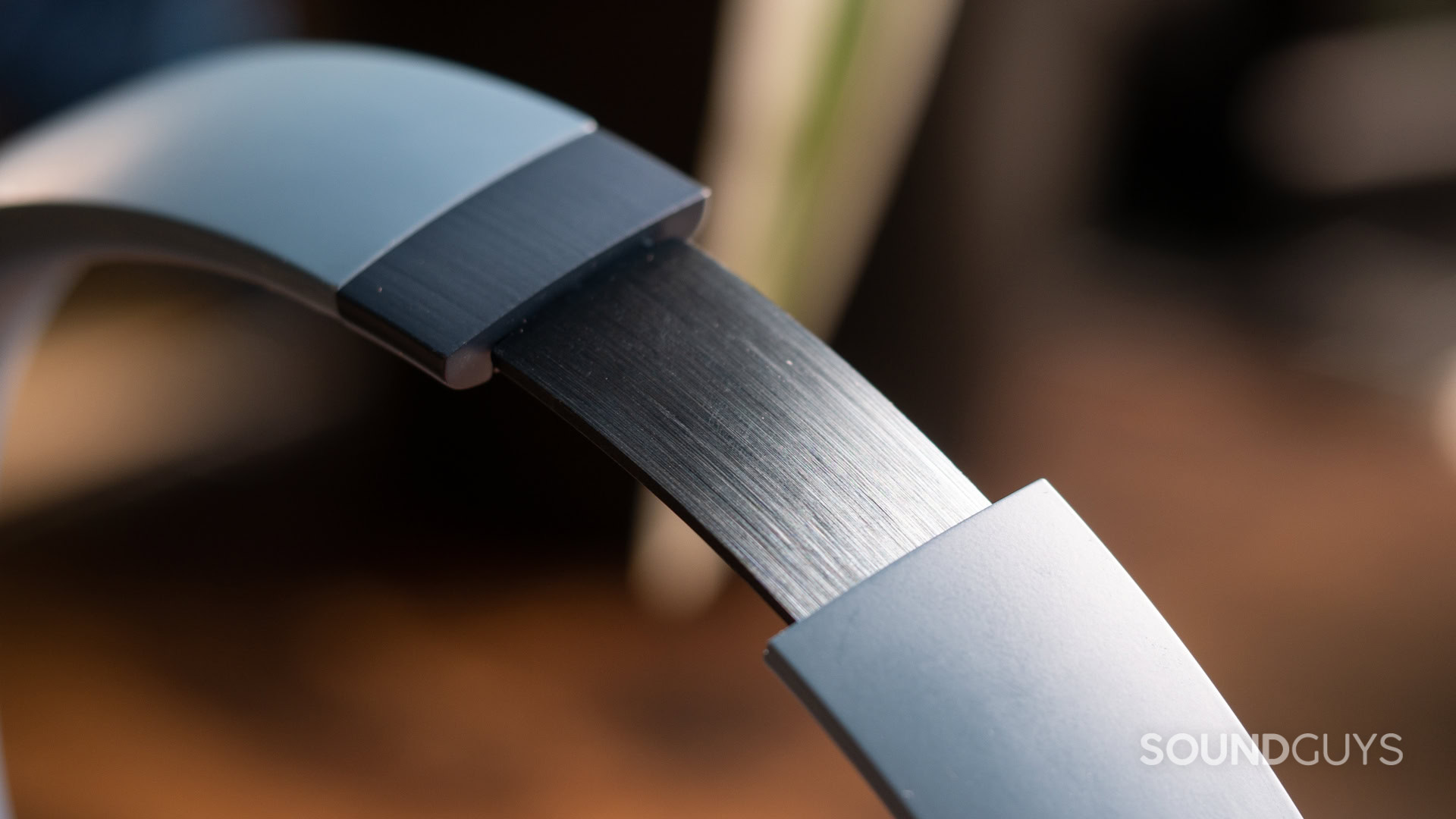
The Beats Solo 4 is not waterproof nor does it carry an ingress protection rating, but that doesn’t mean it can’t handle ambient moisture. Just be careful with the headphones and don’t shower with them and you should be fine. However, I would not recommend these for the gym because of the fit issues and the lack of moisture resistance.
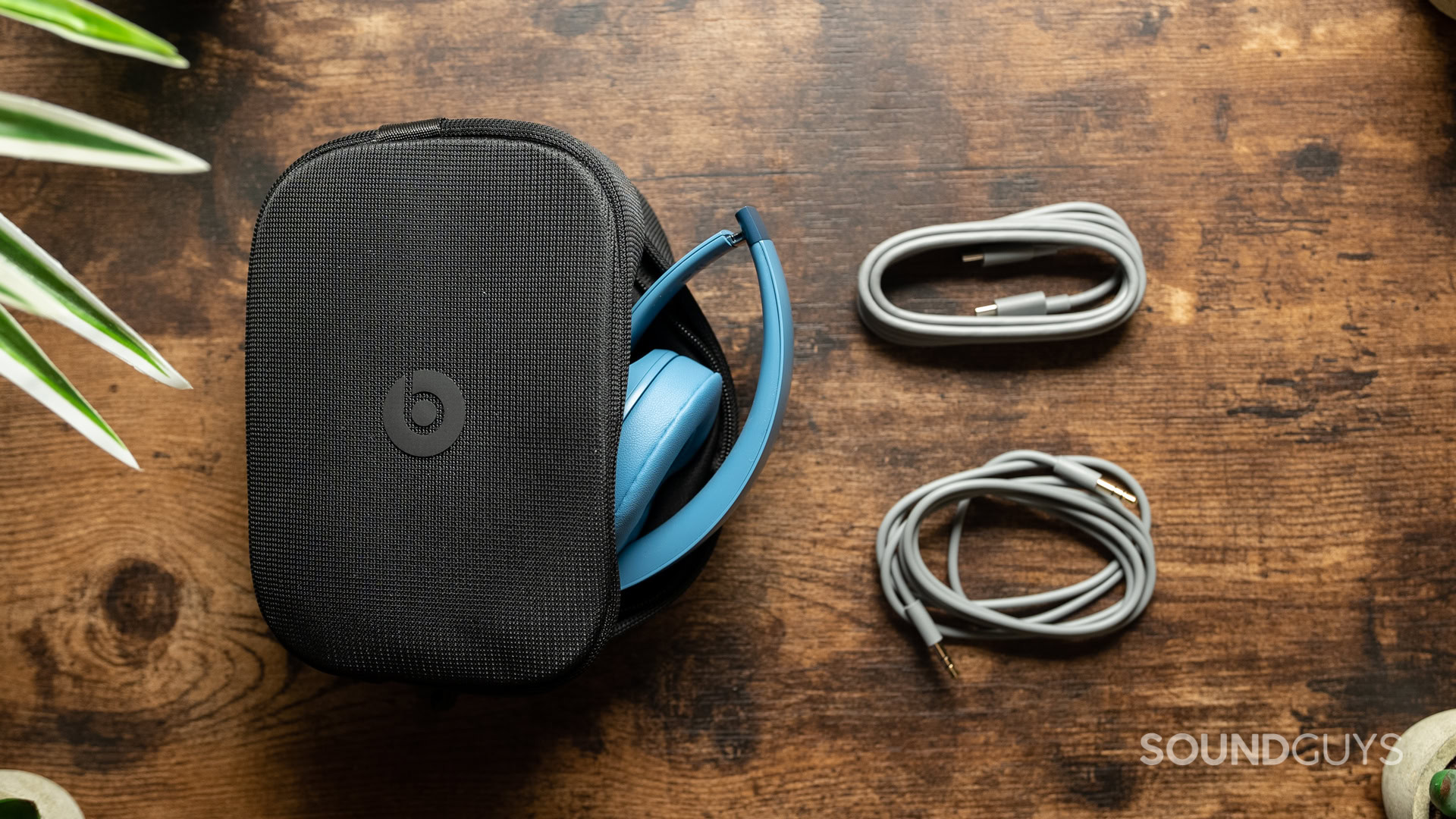
For those of you with limited carrying space on your commutes, you’ll be happy to note that the Beats Solo 4 can be folded up and stowed in a small carrying case, included with the headphones. Additionally, there are pockets within to store the included USB and 3.5mm cables so you don’t lose them in your travels.
How do you control the Beats Solo 4?
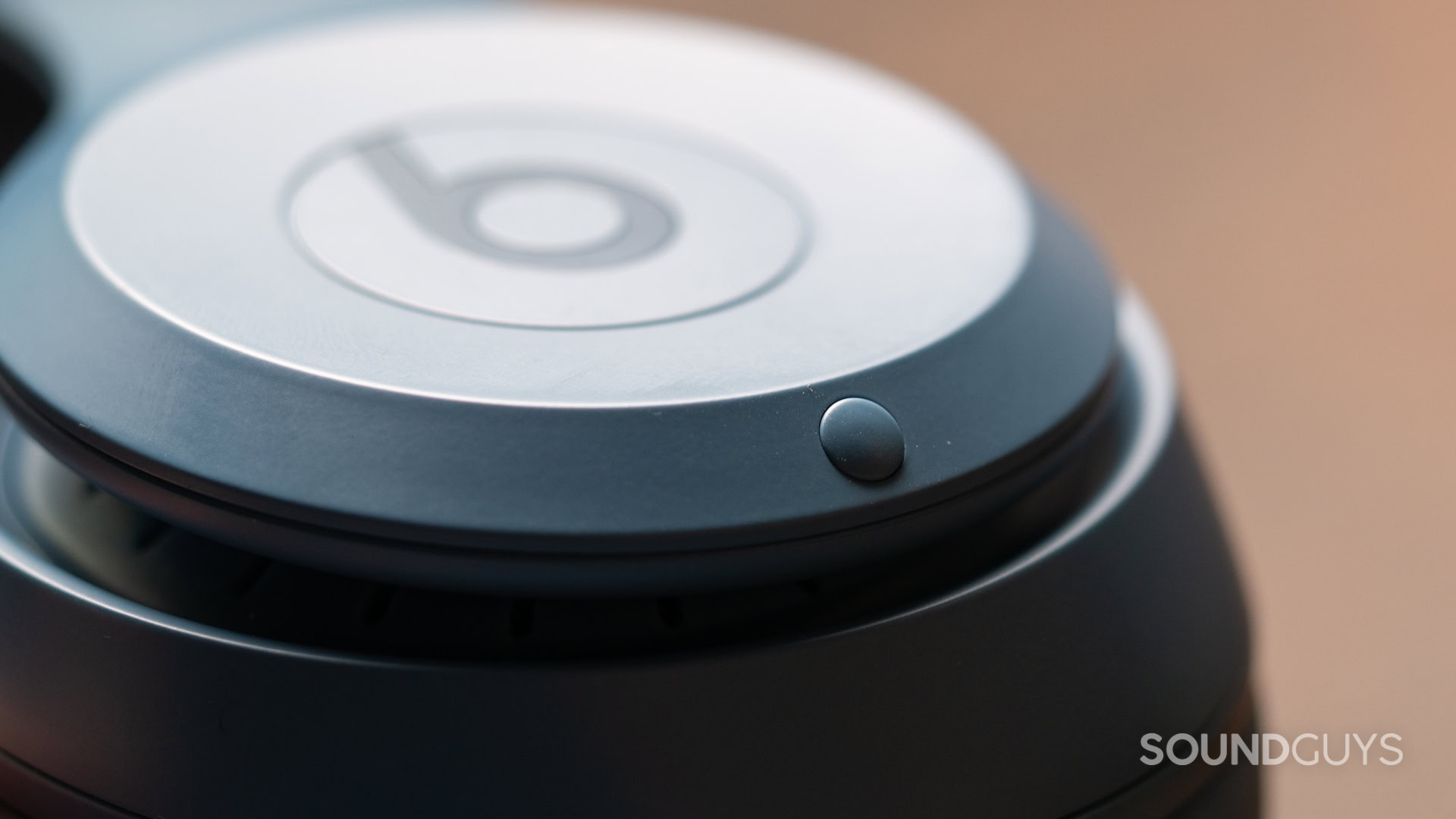
You can control your music playback and calls using the “b” button on the left earcup, though controls are a bit on the limited side. Below is a summary of main controls:
| Button | Single press | Long press |
|---|---|---|
| Button b button | Single press Play / pause / Answer (or end) call | Long press Voice assistant |
| Button Power | Single press On / off | Long press Bluetooth pairing |
| Button Ring | Single press Volume up / down | Long press N/A |
It’s easy to miss the clicky buttons, as they look exactly like they’re a part of the chassis. But the entire back of the left ear cup will control your music playback in some way or another. Just remember that the volume is controlled by that ring around the “b” button, and not a touch gesture.
Just remember not to put too much pressure into your button presses, as these can dislodge your headphones, or increase the pressure on your ears temporarily. It’s annoying to be sure, but a little restraint makes it a non-issue.
Should you use the Beats app for the Beats Solo 4?
If you want to unlock firmware updates, Find My Device, and call control customization, you’re going to need the Beats app if you’re on Android. But the app itself does not offer EQ presets or the ability to alter your sound to your liking. Given that there’s not a huge benefit to using the app if you’re not looking for advanced features, you might want to skip the app if you’re privacy-focused.
Users with iPhones don’t need an app — which is good, given that the Beats app isn’t on the App Store anyway — so there are no decisions to be made on iOS. Everything is baked into the operating system, including the Spatial Audio with head tracking.
How do the Beats Solo 4 connect?
You can connect the Beats Solo 4 to your source device over Bluetooth 5.3 via SBC or AAC, or you can use the included cables — 3.5mm and USB-C — to listen wired. Happily, you can listen wired via either the USB-C cable or the 3.5mm cable if you run out of power. Though it seems as though this should be more common than it is, not all primarily wireless headphones can do this.
Just be aware that if you decide to listen to your tunes over USB-C when connected to an Android device, it will kick you off the app. Strange, but not exactly a make-or-break event. It’s a very nice thing to be able to swap to wired — USB or TRS — whenever you need.
To pair the Beats Solo 4 to your phone, you can either use the fast pair or force the connection the old-fashioned way.
Fast pair:
- Turn your headphones on near your enabled source device
- Tap the option to pair
Traditional pair:
- Turn on your headphones, holding the power button down long enough to enable pairing mode.
- Open the Bluetooth menu on your source device, and hit "scan."
- Select the Beats Solo 4 from the available devices list.
How long does the Beats Solo 4 battery last?
At a reasonable listening level with music peaking at 75dBSPL, the Beats Solo 4 was able to survive our battery test for 84 hours and 18 minutes. That’s a stellar result, and that should be able to handle your commutes for a couple of weeks, plus most of your work days.
A side benefit to not having to charge your headphones very often is the reality that the battery should be viable for longer, as it won’t be subjected to full charge cycles as frequently as headphones with poorer battery life. Though it may seem like a little thing, the battery is often the component that gives up the ghost on wireless headphones, forcing you to buy new cans. Should you pick up the Beats Solo 4, your ear pads should wear out long before the battery does.
Beats advertises that a 10-minute charge grants 5 hours of playback.
How well do the Beats Solo 4 block out noise?
Loading chart ...
The Beats Solo 4, unlike other recent Beats products, do not have active noise cancelation. Consequently, the headphones struggle a bit with isolating low-end noise, even if they’re able to prevent a notable amount of high-end noise from reaching your ear.
However, as these are on-ear headphones, that all depends on whether or not you’re able to get a good fit — something on-ears notoriously don’t do reliably. So keep that in mind when you look at the above chart: that represents the best you can hope for, and not what your typical use will necessarily be. I had one heck of a time hearing a recap of the Bruins game the night prior while on the SkyTrain because the fit was so poor, and the headphones let in too much noise of a similar frequency to speech sounds.
The Beats Solo 4 doesn't have one! If you're looking for transparency mode, you'll have to buy other headphones.
How do the Beats Solo 4 sound?
They can’t all be winners; though the days of the super-bassy Beats are gone, the Solo 4 isn’t quite there.
Multi-Dimensional Audio Quality Scores (MDAQS)
The chart below shows how the sound of the Beats Solo 4 was assessed by the Multi-Dimensional Audio Quality Score (MDAQS) algorithm from HEAD acoustics.
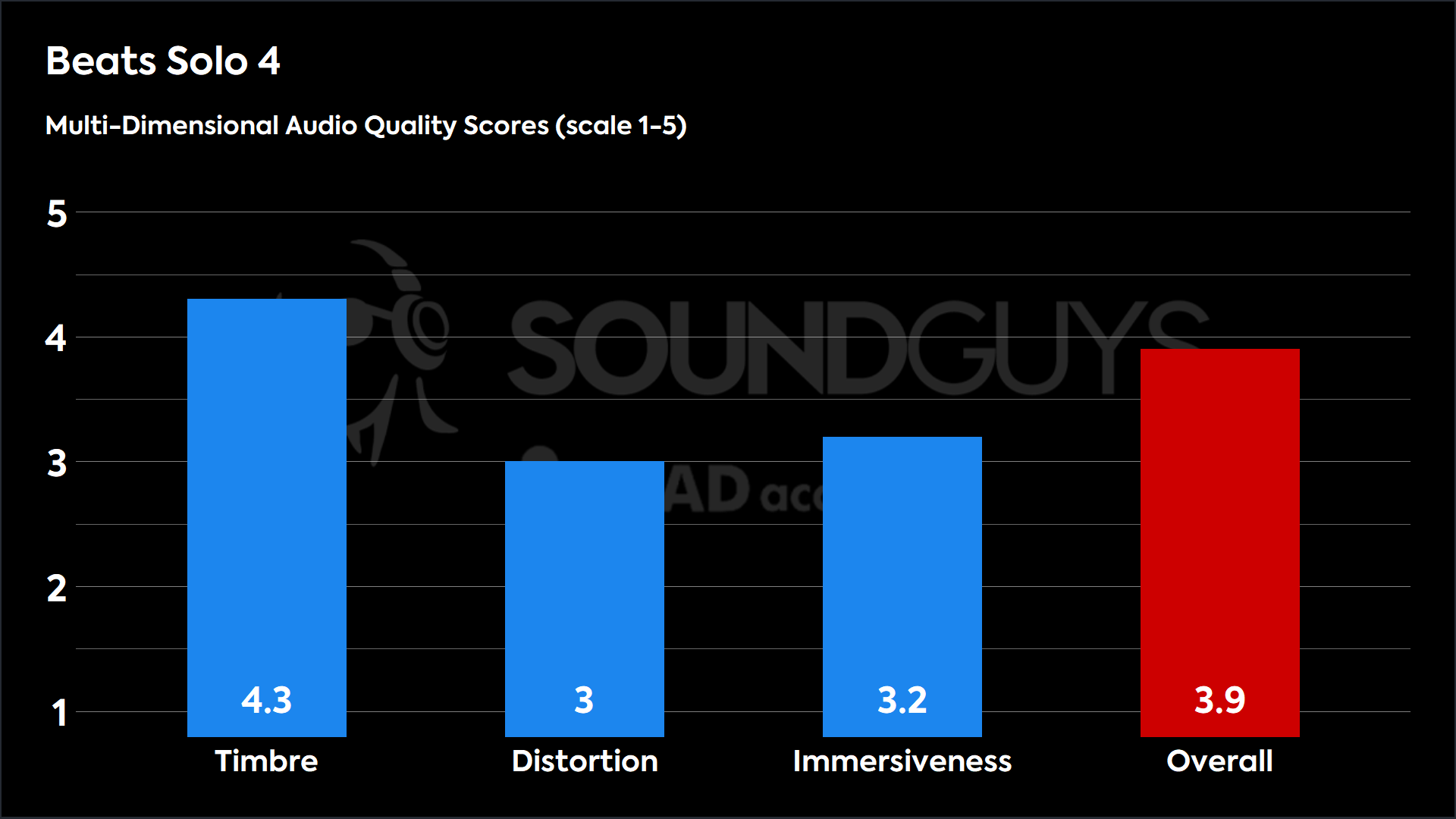
Though the virtual panel of listeners rate the timbre fairly well, the distortion and immersiveness mean opinion scores (MOS) drag the overall rating down to an uninspiring 3.9. While the sound isn’t really bad, it’s not all that great either. Given that these results were achieved under test conditions too, it’s also possible that your experience will be worse in the presence of outside noise.
- Timbre (MOS-T) represents how faithfully the headphones reproduce the frequency spectrum and temporal resolution (timing information).
- Distortion (MOS-D) represents non-linearities and added noise: higher scores mean cleaner reproduction.
- Immersiveness (MOS-I) represents perceived source width and positioning: how well virtual sound sources are defined in three-dimensional space.
Reviewer’s notes
Beats has come a long way from its beginnings, and the Beats Solo 4 does okay at its main task: bumping tunes in your ear. However, you’re not going to get a sound that blows you away unless you’ve never listened to headphones before.
The Beats Solo 4 might sound fine enough with tracks like the Mistfits’ “Don’t open ’til Doomsday.” But newer pieces like Promise Game’s “Connecticut” will sound quite thin and dull compared to how they would on other headphones. This is especially obvious on slower tracks with less going on like Andrea Bocelli’s “Con te partiro” or Lil Nas X’s “VOID.” In the latter song, you’ll notice the bass guitar sounds quieter than they should be.
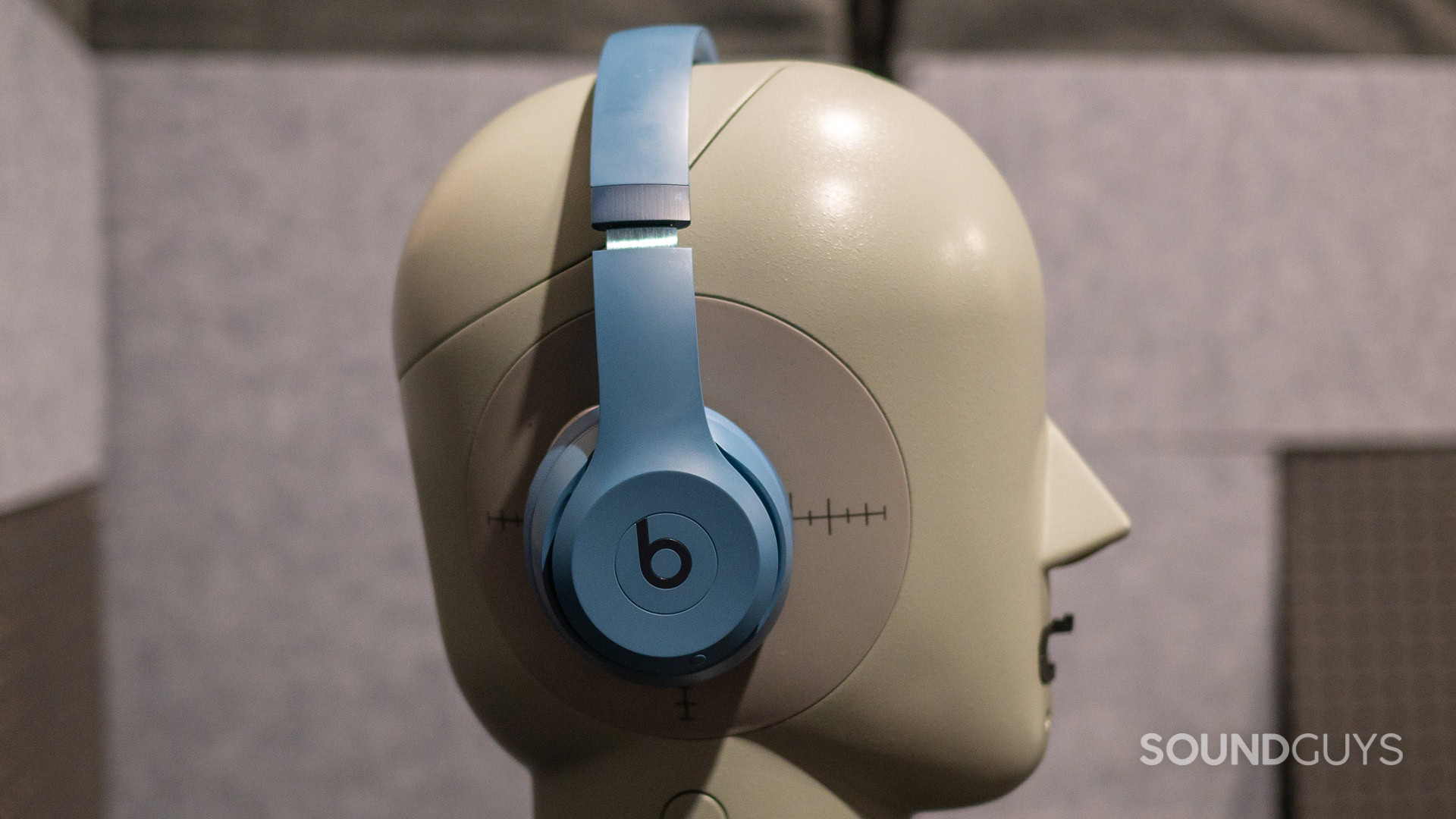
The issues get worse when you take these headphones on a commute, as the added noise tends to make the lows much harder to hear — the Beats Solo 4 doesn’t do much to block outside noise in these bands. You may find yourself turning up the tunes in order to hear this, but you’ll find that the experience doesn’t improve.
Objective Measurements
Loading chart ...
The Beats Solo 4 exhibits some underemphasis from 20Hz on up through 800Hz, and then overemphasizes 3kHz through 9kHz. This leads to a sound that will appear very strong in the highs, and less so in the bass region. It’s a little strange to be knocking a set of Beats headphones for not having enough bass, but here we are. Mids, too, suffer. The vocals in Rush’s “The Spirit of Radio” compete with guitars and synths. It leads to the natural inclination to turn up the volume, but again: not a great solution to a problem that can’t be fixed. Compared to our house curve, these headphones are aren’t too far off. If you listen for long periods of time, you might find that the headphones fatigue your ears, in part due to the overemphasis in the 3kHz region.
Can you use the Beats Solo 4 for phone calls?
Just like the rest of the Beats stable, the Beats Solo 4 is able to handle phone calls while you’re connected to your phone. Below are some sample recordings from our lab.
Beats Solo 4 microphone demo (Ideal conditions):
How does the microphone sound to you?
Beats Solo 4 microphone demo (Office conditions):
Beats Solo 4 microphone demo (Street conditions):
Beats Solo 4 microphone demo (Windy conditions):
Beats Solo 4 microphone demo (Reverberant space):
The Beats Solo 4 does an okay job suppressing incidental noise and echoes, but has mixed results against wind. Believe it or not, that’s better than most headphones, and overall this is a decent result. Just keep in mind that if you’re not on a phone call, most voice chat clients will also add their own noise suppression to your signal, making noise less obvious.
Should you buy the Beats Solo 4?
I find it hard to recommend the Beats Solo 4. The sound isn’t great, the headphones aren’t that comfortable, and the cost is far too high for what you get. Don’t buy these headphones at full price.
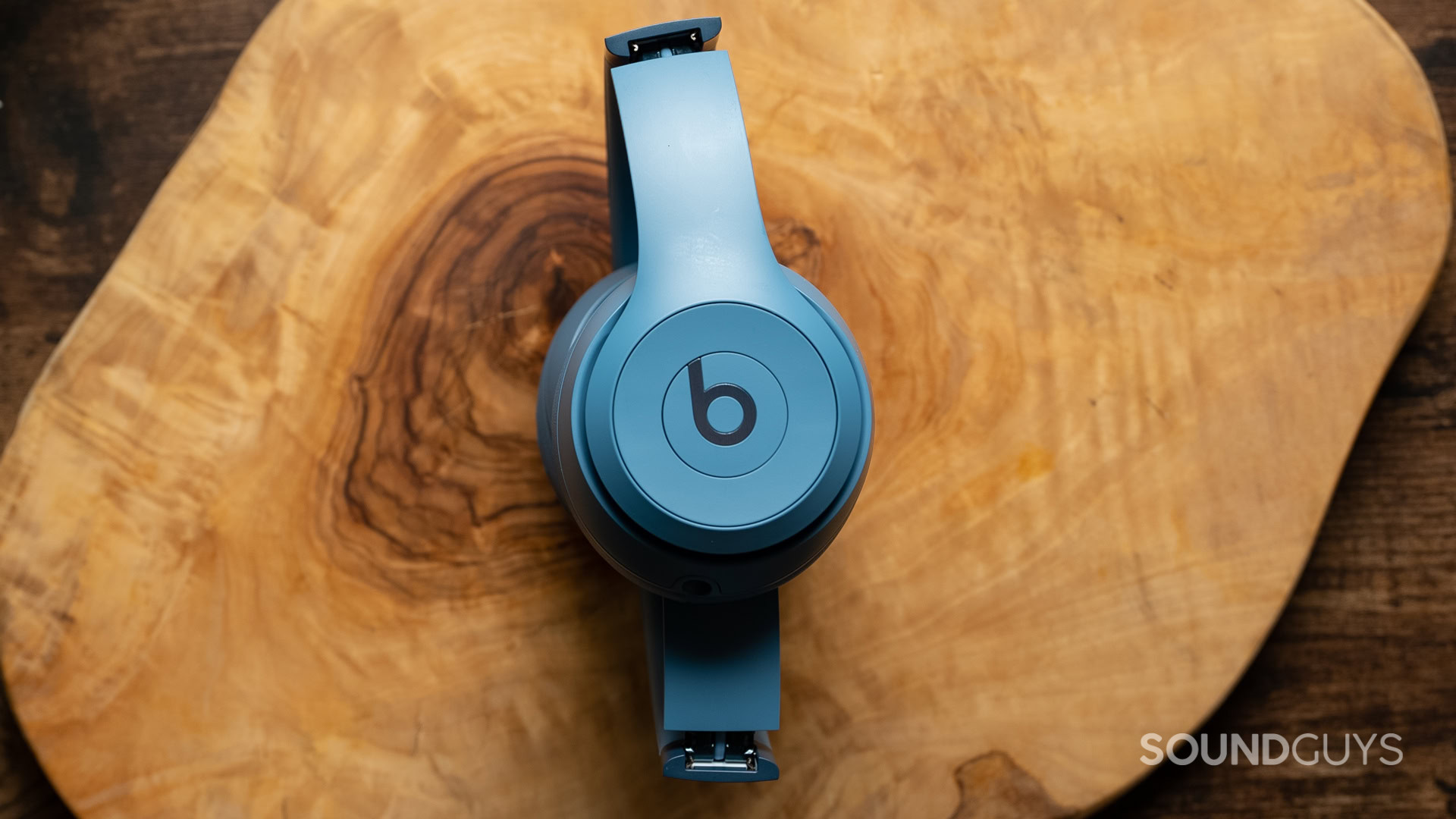
There’s a whole world of headphones out there that are much more worth your time, and it’s really hard to pick “wrong” if you look around a little bit more. Though we’re not going to tell anyone to avoid these headphones entirely, there’s just so much else out there that I’m having trouble thinking of a situation where I’d recommend these over other models.

How does the Beats Solo 4 compare to the Beats Studio Pro?
Want all the features of the Beats Solo 4, but desire ANC, a better fit, better performance, and have the same branding? The Beats Studio Pro ($349.99 at Amazon) offers this. Sure, the ear cups are a little small for over-ears, but these headphones are extremely similar to the Beats Solo 4 without its worst shortcomings.
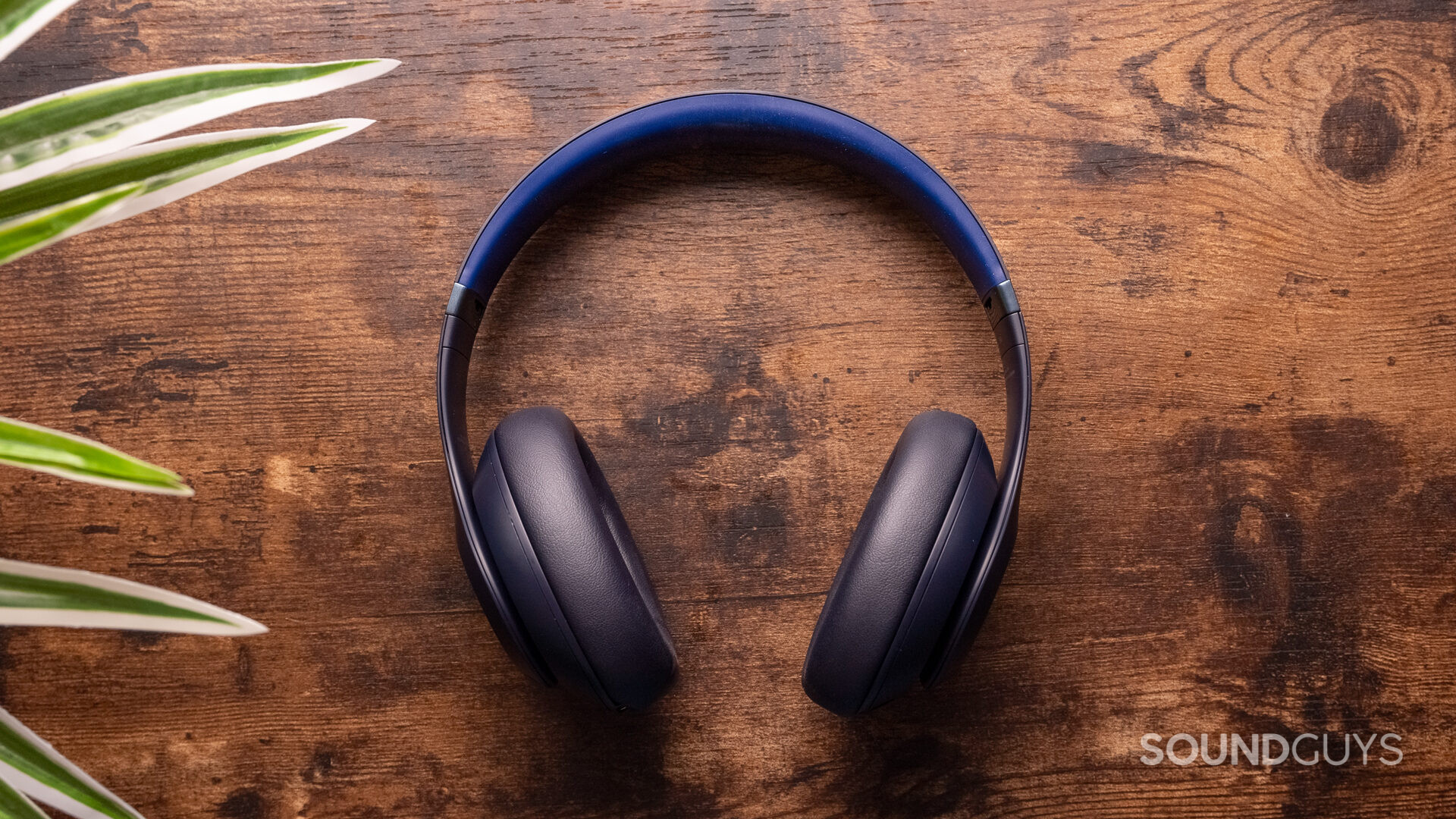
Both headphones have USB-C listening, Spatial Audio with head tracking, and some of the better hardware available to Beats cans. However, the improved fit of the Studio Pro means that the performance is less likely to suffer from inconsistent fit and more likely to be comfortable for the long haul.
What should you get instead of the Beats Solo 4?
For $200, there are plenty of alternatives on the market, all with their own tradeoffs. However, the world is your oyster if you’re okay without spatial audio with head tracking.
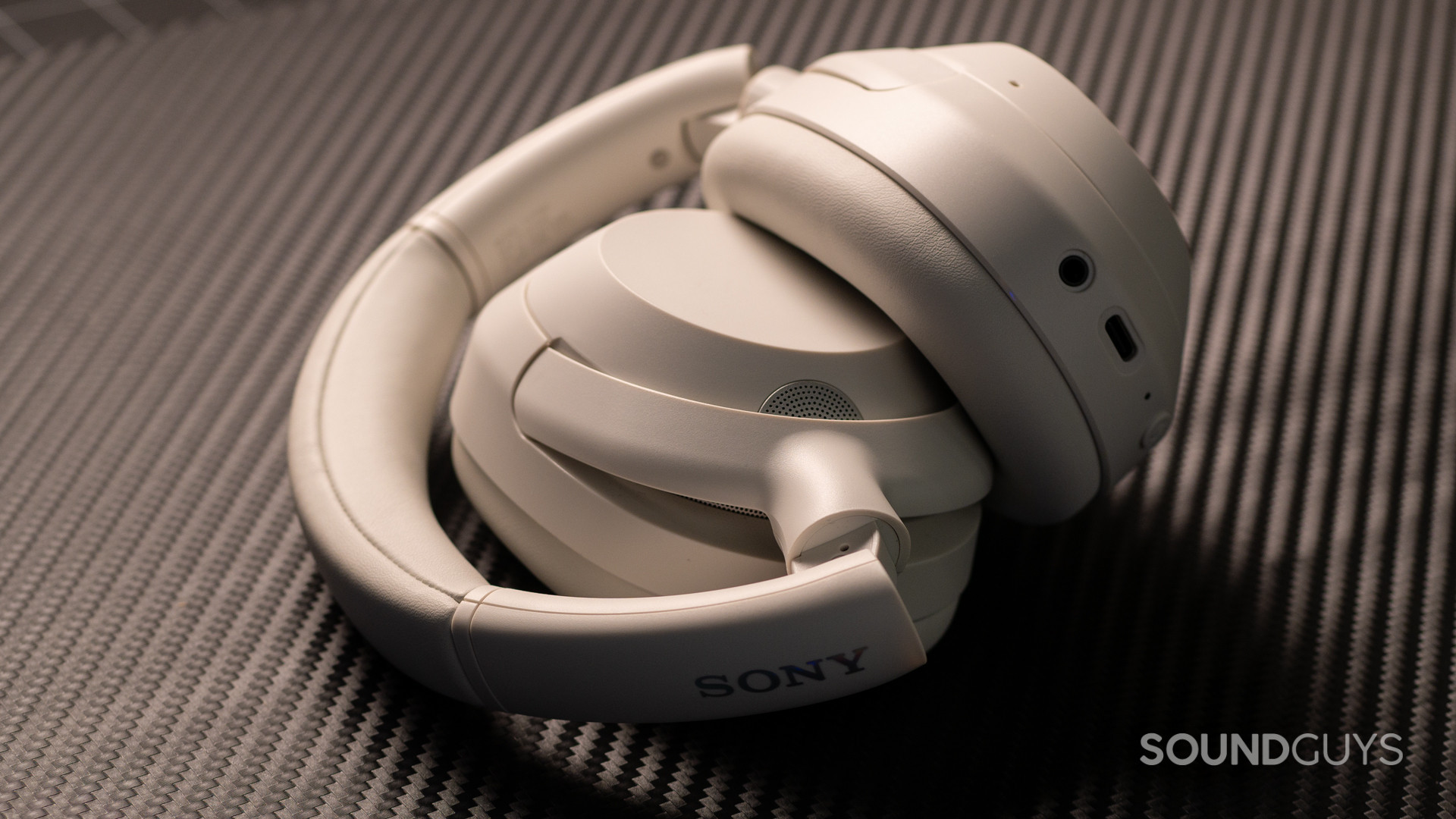
First up, if you’re willing to ditch the on-ear design (I cannot recommend this enough), then you could save money, find more comfortable headphones, and get better audio quality from most of the other easy-to-find models of cans out there. For example, you could get a much more Beats-appropriate sound from the Sony ULT WEAR ($199.99 at Amazon), along with better comfort.
If you’d rather just save money, the JLab JBuds Lux ($79.99 at Amazon), Anker Soundcore Space One ($99.99 at Amazon), or really any of the headphones we highlight under $100 will make you happy. The biggest thing you might have to sacrifice is spatial audio with head tracking, but that’s not exactly a make-or-break feature.
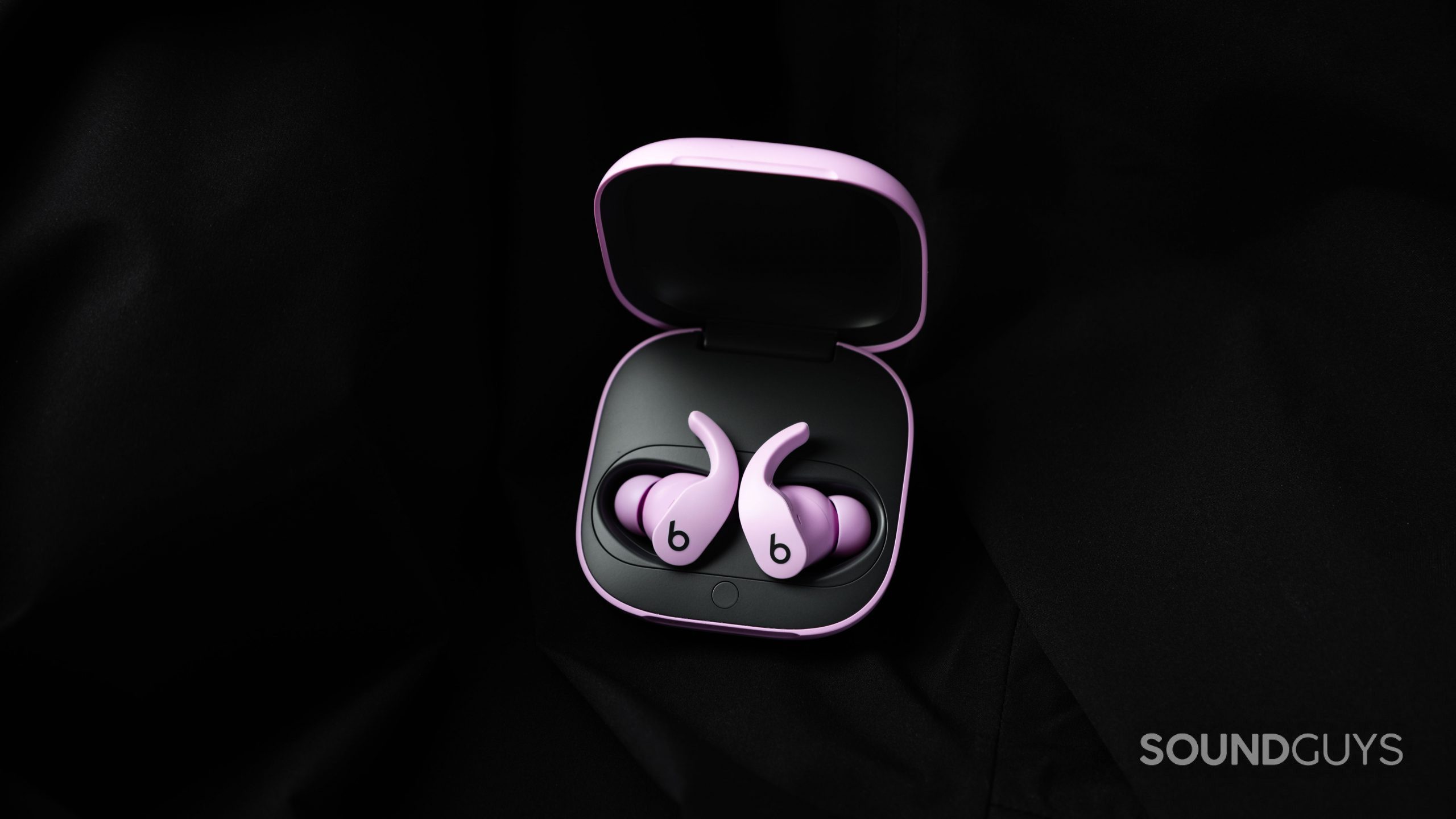
Gym rats will almost always be better served by finding in-ears with water resistance, so if you’re open to in-ears, I highly recommend them over the Beats Solo 4. You can check out our list of best earbuds for working out if you’re curious to see what’s out there.
Frequently asked questions
No.
No. The Beats Solo 4 bears no ingress protection rating. Though the headphones probably won't die if exposed to sweat, they aren't rated to withstand any particular amount of moisture.
With no IP rating and an on-ear design, I wouldn't recommend it.
Yes.
You can connect via the controller's TRS plug, but not over Bluetooth.
The Beats Solo 4 is a set of on-ear headphones.